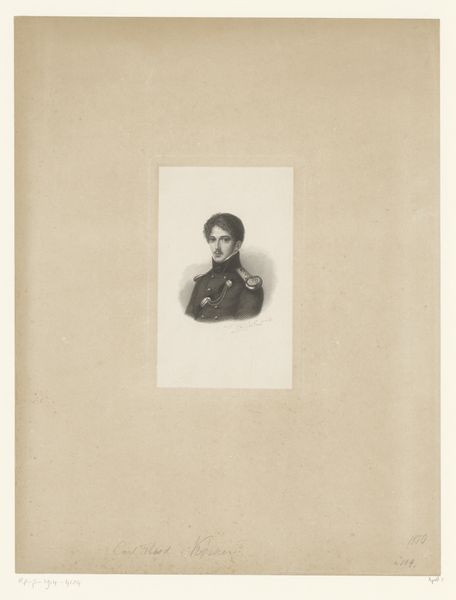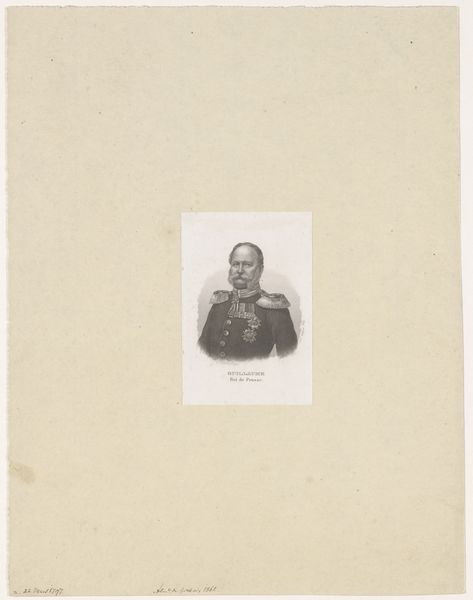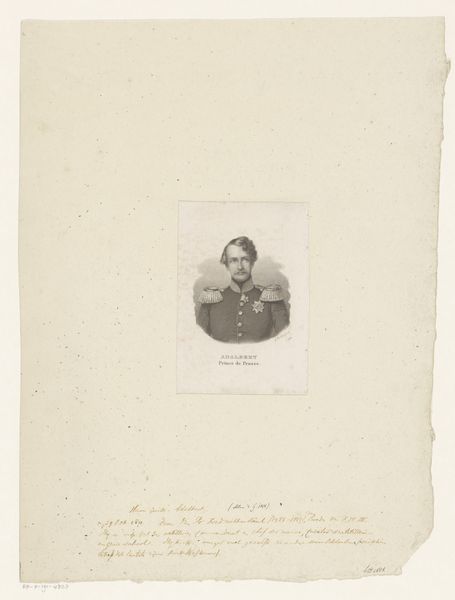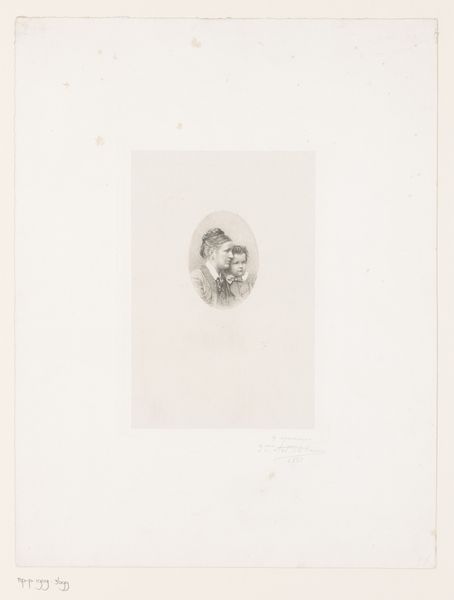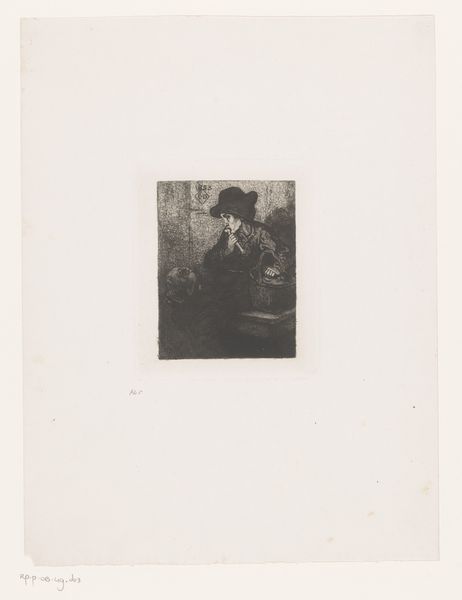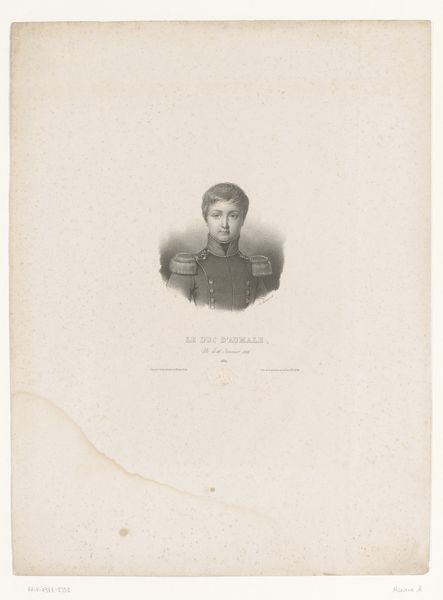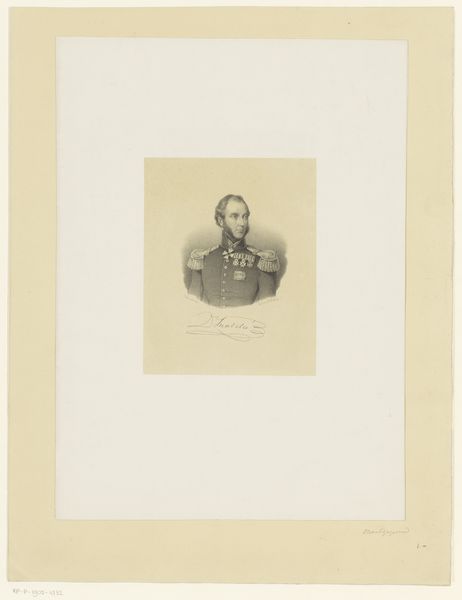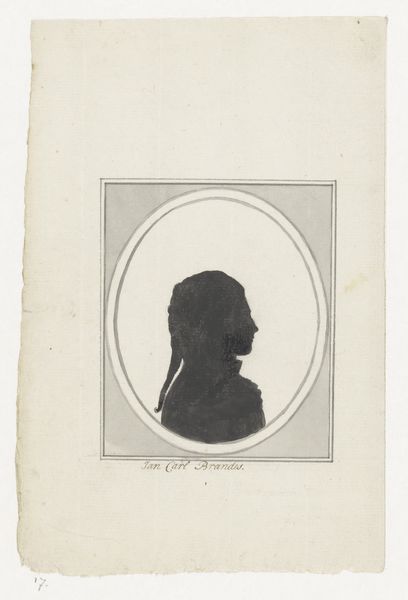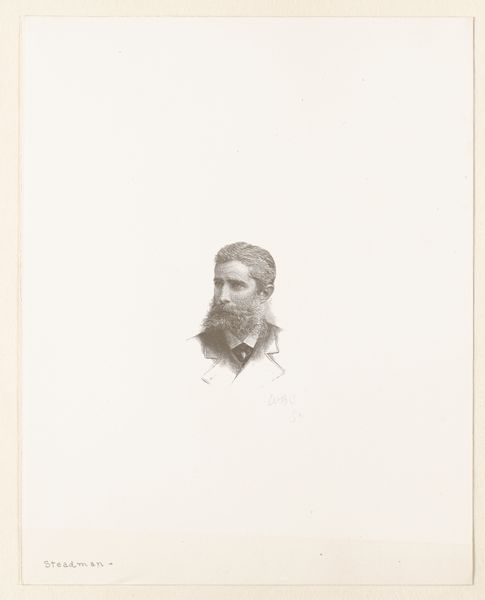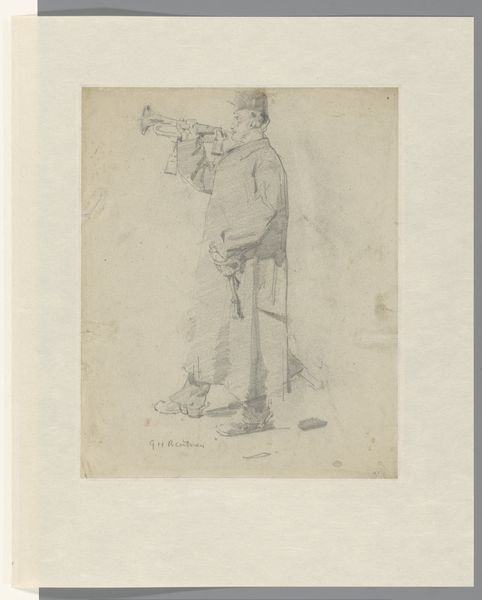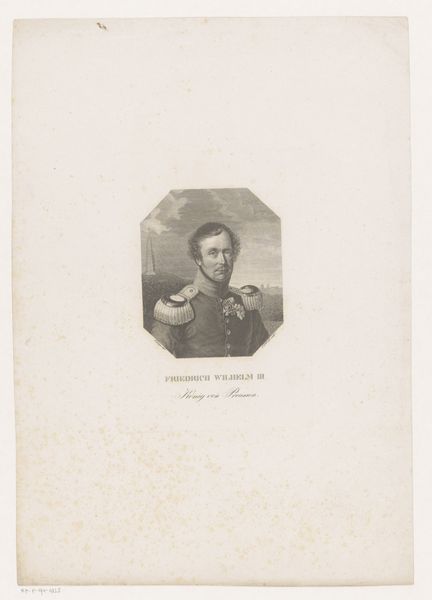
Portret van Henri Eugene-Philippe-Louis d'Orleans, hertog van Aumale 1848 - 1890
0:00
0:00
drawing, pencil
#
portrait
#
drawing
#
16_19th-century
#
pencil sketch
#
old engraving style
#
pencil
#
academic-art
#
realism
Dimensions: height 229 mm, width 170 mm
Copyright: Rijks Museum: Open Domain
Curator: Today, we’re looking at a pencil drawing, "Portret van Henri Eugene-Philippe-Louis d'Orleans, hertog van Aumale" dating from 1848 to 1890, by Philippe Auguste Cattelain. Editor: The most striking thing is the emptiness around the figure. It gives him an almost ghostly presence. What else do we know about this Henri d'Orleans? Curator: He was an important figure, a Duke known for his military career and later as a patron of the arts. This portrait probably captures him in his military uniform. It reflects the importance the family placed on displaying their social stature. Editor: Interesting, and note how the artist employs shading and delicate lines, the details within the face contrast sharply with the overall muted palette of this drawing. I wonder, are we meant to see this figure with such prominence? The work gives a feeling of importance through detailed lines but a subdued and simple rendering otherwise. Curator: Absolutely. He played significant roles in French politics. These portraits circulated amongst the elite circles to further elevate figures. Editor: Consider the visual composition alone; the sharp definition around his eyes, mustache, and even the glints of light off his decorative pin are captivating and a study of formal technique and style for the late 19th century. Curator: Yes, while seemingly simple, portraits like this were critical in building and solidifying the power and legacy of families like the House of Orleans. And this one clearly situates Henri as a respected military figure, it’s meant to project confidence and strength. Editor: In many ways it accomplishes that through understated means, without overwhelming colour or grand gestures that may signal authority, it shows his essence. Curator: Well, the artwork invites us to think about how visual representation contributes to shaping the historical narrative around influential figures. Editor: I see it as an almost subtle study in the emotional weight carried by simple form and rendering, the composition speaking of an important presence more so than overt strokes alone might communicate.
Comments
No comments
Be the first to comment and join the conversation on the ultimate creative platform.
